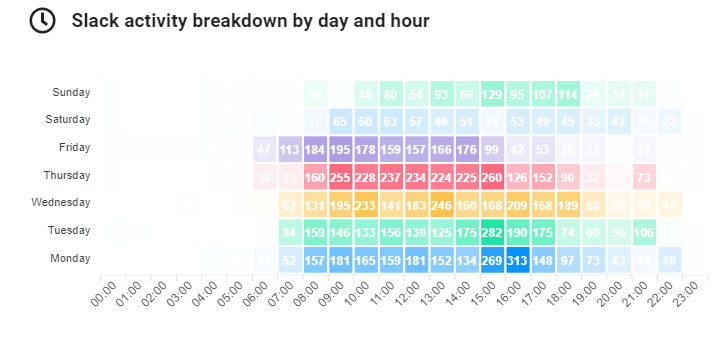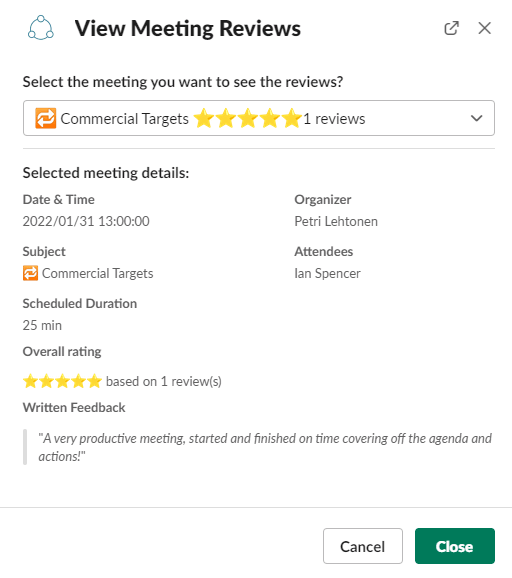Meetings are the key driver of collaboration, decision-making, and strategy in most organizations. However, they often come with their own set of challenges, such as time mismanagement, lack of clear objectives, and participant disengagement, leading to reduced overall effectiveness. The importance of refining meeting practices has thus become a crucial aspect of organizational efficiency and employee satisfaction.
Effective meetings not only save time but also boost creativity, facilitate better decision-making, and enhance team collaboration. They are instrumental in breaking down information silos, aligning team efforts, and driving meaningful progress toward organizational goals. However, achieving this level of efficiency in meetings requires more than just intent; it demands a structured approach and the right tools.
Setting a Clear Agenda and Objective
The foundation of any effective meeting lies in its agenda and objectives. Establishing a clear agenda is essential for ensuring that meetings are focused, time-efficient, and productive. A well-defined agenda sets the tone for the meeting, outlines its purpose, and provides a roadmap for discussion. This is particularly crucial in a remote work environment where clear communication is essential to align team efforts.

Creating an effective agenda involves a few key steps:
- Define the Meeting's Purpose: Every meeting should have a specific and clear purpose. This could be decision-making, brainstorming, progress updates, or problem-solving. Having a defined purpose helps in setting the right expectations and preparing participants accordingly.
- List Agenda Items with Details: Include specific topics to be discussed, along with a brief description of each item. This helps participants prepare for the meeting and understand what will be covered.
- Assign Time Slots and Owners to Each Item: Allocate a specific amount of time to each agenda item and assign a person responsible for leading that part of the discussion. This keeps the meeting on track and ensures that all important points are covered efficiently.
- Distribute the Agenda in Advance: Share the agenda with all participants well before the meeting. This allows them to prepare any necessary materials or questions, leading to a more engaged and productive discussion.
A well-defined agenda can lead to a 50% reduction in meeting time, as found in studies on workplace efficiency. By incorporating these practices and utilizing tools like Flowtrace, organizations can transform their meetings into powerful tools for collaboration and decision-making, rather than time-consuming obligations.
Time Management: Starting and Ending on Time
Effective time management is a critical component of successful meetings. Ensuring that meetings start and end as scheduled respects participants' time and contributes to a more focused and productive discussion. Here are some strategies to help achieve this:

- Punctuality: Emphasize the importance of starting the meeting on time. This sets a precedent for professionalism and respect for everyone's schedule. Encourage participants to join a few minutes early to address any technical issues, especially in virtual settings.
- Time Allocation: Allocate a specific duration for each agenda item and stick to it. This helps in covering all the important points without overextending the meeting.
- Use of Timers: Implementing timers for each agenda item can be an effective way to keep the meeting on track. This not only ensures that all topics are covered but also prevents any particular discussion from dominating the meeting time.
- Clear End Time: Announce the meeting's end time at the start and work towards concluding discussions within this timeframe. This helps in maintaining focus and efficiency throughout the meeting.
- Limiting Participants: Invite only those who are necessary for the meeting. Having fewer participants can reduce the likelihood of prolonged discussions and help maintain the meeting’s focus.
- Prompt Wrap-Up: As the meeting nears its end, summarize the key points discussed, reiterate any decisions made, and confirm the action items and their respective owners.
According to a survey, around 40% of employees feel that half of the meetings they attend are unproductive, which highlights the importance of timely meetings and can often be attributed to poor time management.

Participant Engagement and Inclusion
Active participation and engagement from all attendees are crucial for the success of any meeting. When participants are engaged, meetings become more dynamic, productive, and inclusive, leading to better outcomes and decisions. Meetings where all members actively contribute are 20% more likely to lead to a successful outcome. Here are some techniques to ensure active participation and foster inclusive discussions:
- Encourage Open Communication: Create an environment where all participants feel comfortable sharing their ideas and perspectives. This can be achieved by setting a tone of respect and openness at the beginning of the meeting.
- Diverse Participation: Actively involve all participants by asking for their input and perspectives. This can be particularly important in virtual meetings where it's easy for some attendees to become passive observers.
- Use of Interactive Tools: Utilize interactive tools and techniques, such as polls, breakout sessions, or brainstorming activities, to keep participants engaged and encourage a variety of viewpoints.
- Assign Roles: Assign different roles to participants, such as timekeeper, note-taker, or discussion leader, to encourage active involvement and responsibility sharing.
- Meeting Facilitator’s Role: The facilitator should actively work to include everyone in the discussion, especially those who are less inclined to speak up. They should also manage dominating participants to ensure a balanced discussion.
- Follow-up on Contributions: Acknowledge and follow up on contributions made by participants. This not only shows that their input is valued but also encourages continued engagement.
Utilizing Technology and Collaboration Tools
Technology plays a crucial role in enhancing the efficiency and effectiveness of meetings. The use of video conferencing and collaborative platforms has become increasingly important, especially in the context of remote work and global teams. Here are some ways in which technology can be leveraged for more dynamic meetings:
- Video Conferencing Tools: Utilizing video conferencing tools can help create a more engaging and personal meeting experience, especially when face-to-face interactions are not feasible.
- Collaborative Platforms: Tools such as Slack can be used for pre-meeting collaboration. These platforms allow for the sharing of agendas, documents, and other resources, ensuring that all participants are prepared and on the same page.
- Interactive Elements: Incorporating interactive elements like live polls, Q&A sessions, and collaborative whiteboards can keep participants engaged and encourage active participation.
- Meeting Management Software: Using specialized meeting management software can help in scheduling, agenda setting, and follow-up tasks, making the meeting process more streamlined and efficient.
- Integration with Flowtrace: Flowtrace integrates seamlessly with these technology tools, enhancing meeting efficiency. It provides insights into how these tools are being used within the organization, helping to identify best practices and areas for improvement.

By leveraging these technologies and integrating them with Flowtrace's capabilities, organizations can transform their meetings from routine gatherings into productive, engaging, and collaborative sessions that drive meaningful outcomes. Actually, companies using collaborative technologies have seen a 20-30% improvement in productivity, according to McKinsey Global Institute.
Follow-Up and Action Items
The effectiveness of a meeting is not solely determined by what happens during the meeting itself but also by the follow-up actions that ensue. Properly summarizing key decisions and assigning action items are critical steps in ensuring that the meeting leads to tangible results. This process transforms discussions into actionable tasks, driving progress and accountability.
- Summarizing Key Decisions: At the end of each meeting, take time to summarize the key decisions made. This ensures that all participants are on the same page regarding the outcomes of the meeting.
- Assigning Action Items: Clearly assign action items to specific individuals or teams, along with deadlines. This allocation of responsibilities ensures that the tasks identified during the meeting are executed.
- Documentation and Distribution: Document the summary of decisions and action items and distribute them to all meeting participants. This record serves as a reference point and helps in tracking progress.
- Using Tools for Tracking: Tools like Flowtrace can be invaluable in tracking the progress of action items and holding team members accountable. Flowtrace's meeting analytics enables leaders to monitor follow-ups and ensure that action items are being addressed in a timely manner.
- Regular Review of Action Items: Schedule regular check-ins to review the progress of action items. This not only keeps the team focused on their tasks but also provides an opportunity to address any challenges or roadblocks.
Regular Review and Improvement of Meeting Practices
Continuously reviewing and improving meeting practices is essential for maintaining their effectiveness and relevance in a dynamic work environment. This process not only helps in optimizing the time spent in meetings but also ensures that they contribute positively to the organization's goals and employee satisfaction.

- Establish a Review Process: Implement a regular review process to assess the effectiveness of meetings. This can be done through post-meeting surveys, feedback sessions, or during team meetings.
- Analyze Meeting Data: Utilize data from past meetings to identify patterns and areas for improvement. This includes analyzing the length of meetings, attendance, participation levels, and the completion rate of action items.
- Set Improvement Goals: Based on the insights gathered, set specific goals for improving meeting practices. This could involve reducing meetings, shortening their duration, or enhancing participant engagement.
- Leverage Flowtrace Analytics: Flowtrace's analytics can be a powerful tool in this process. By providing detailed insights into meeting patterns and team productivity, Flowtrace helps leaders make data-driven decisions to enhance meeting efficiency.
- Iterative Improvements: Embrace an iterative approach to making changes. Small, incremental improvements can be more effective and easier to implement than major overhauls.
- Encourage Open Feedback: Create an environment where team members feel comfortable providing honest feedback about meetings. This can lead to valuable insights and foster a culture of continuous improvement.
- Monitor Progress: Regularly monitor the impact of any changes made and be prepared to adjust strategies as needed. Flowtrace can assist in this ongoing monitoring by providing up-to-date data on meeting practices.
Cultivating a Productive Meeting Culture
Improved meeting practices lead to more efficient use of time, clearer communication, and more effective decision-making. These enhancements are about transforming meetings into valuable opportunities for collaboration, innovation, and alignment toward common goals. Flowtrace plays a crucial role in supporting and sustaining effective meeting cultures within organizations. By providing actionable insights and analytics on meeting patterns, participation, and outcomes, Flowtrace enables leaders to identify areas for improvement and track the impact of changes made.




